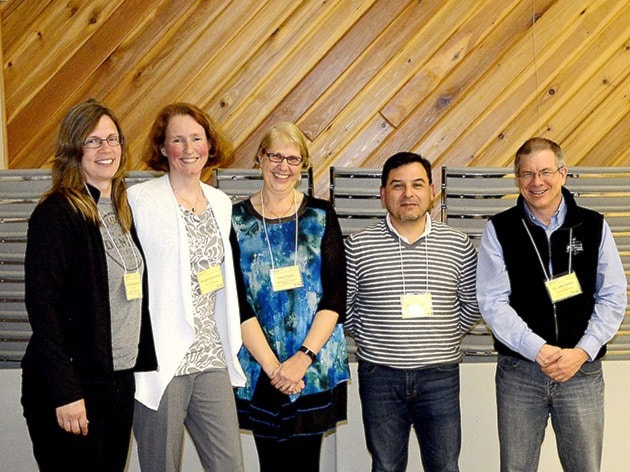The people working to help those with substance abuse issues should personally know the people in other agencies working on the same issues.
That would seem obvious but a needs assessment done in the Clearwater area found that was not always the case, even in this small community, according to Dr. John Soles, a member of the CYMHSU (child and youth mental health and substance use) Clearwater Action Team.
It was to meet this gap that the team sponsored a meet-and-greet at Clearwater Legion on Wednesday afternoon, April 12.
Nearly three dozen representatives from various agencies in the North Thompson Valley as well as Kamloops took part.
Those attending watched some educational videos and broke into groups to discuss various issues, but the main focus was to share a meal together and get to know one another.
A similar meet-and-greet was held last year and organizers were looking forward to seeing if there had been an improvement.
Another gap the survey uncovered was the need for an inter-agency consent form, said Soles. Without such a form, case-workers with one agency could not contact people in another agency about a client without violating that client’s privacy rights.
A third gap identified was education.
To help fill that gap, the local action team worked with School District 73 and Clearwater Secondary School to host a community drug awareness session at the school on April 13.
Other educational activities being planned include a youth summit to be held at CSS in May in cooperation with the RCMP, as well as speakers to visit in the fall.
Heroin does not cause heroin addiction
Although the meet-and-greet was primarily a social function, some interesting and useful information was exchanged.
For example, one of the videos shown said that it used to be believed that addictive drugs cause addiction – if you take heroin long enough, you will become addicted, no matter what.
The classic experiment was to put a rat into a cage and give it a choice of pure water to drink or water laced with heroin or cocaine. After a while the rat would drink nothing but the water laced with drug and eventually it would die.
More recent experiments, however, have shown that the causal chain is not so simple.
If, instead of having just one solitary rat there are a group of rats in the experiment, and they are given a varied environment with a multitude of things to do, the rats will drink little or none of the drug-laced water.
“It’s not the chemical; it’s your cage,” was the message. “The opposite of addiction is not sobriety – it’s connection.”
